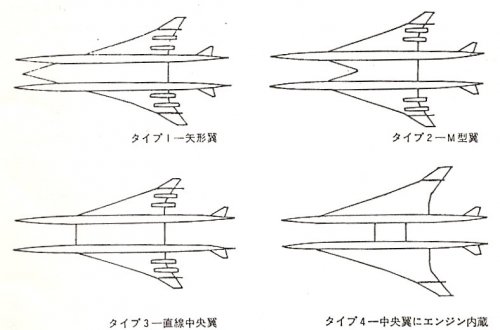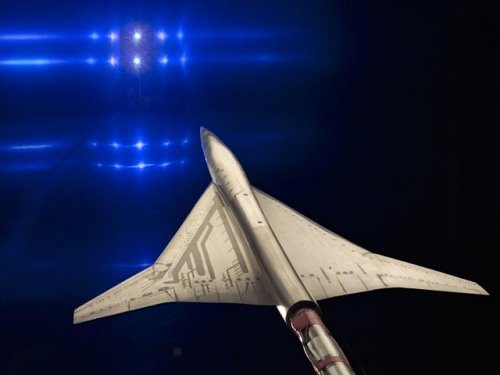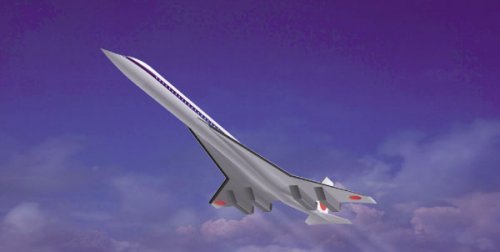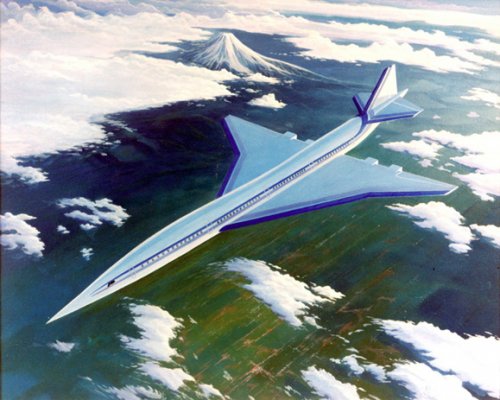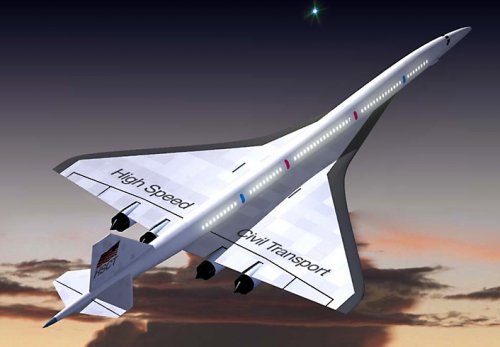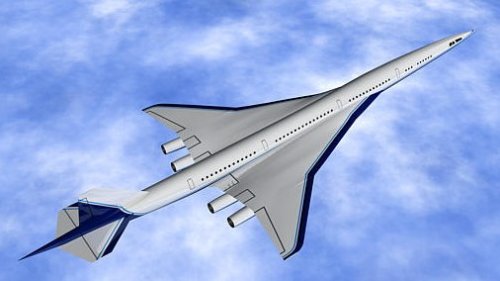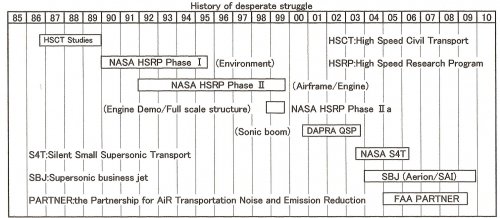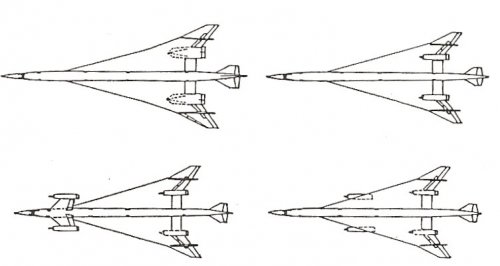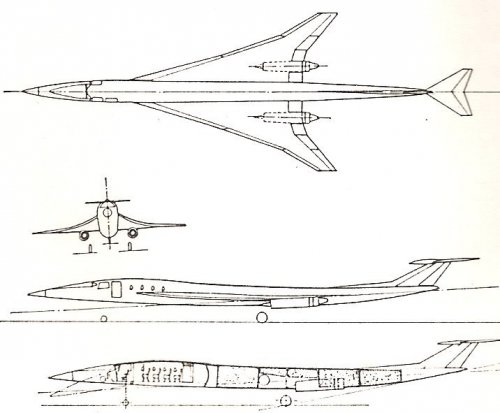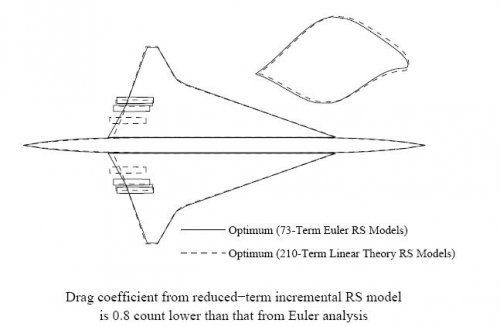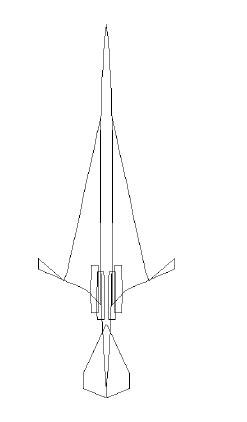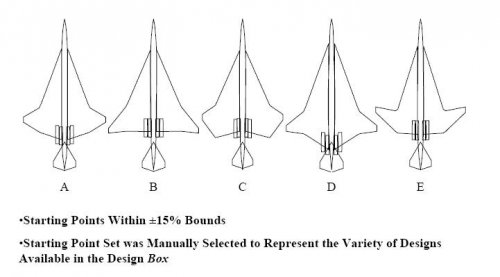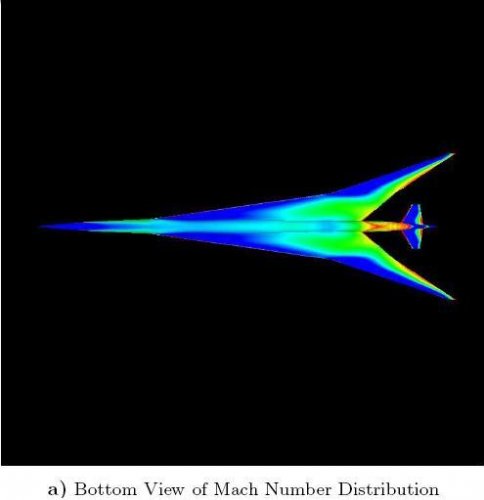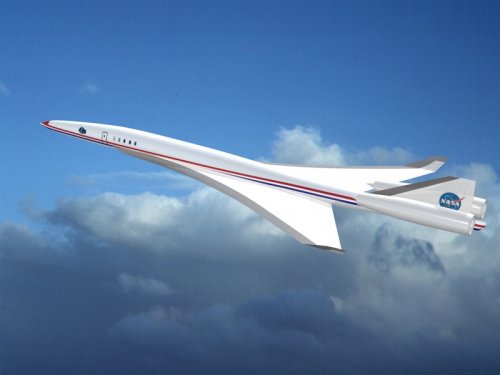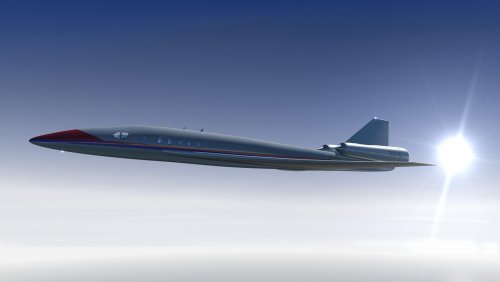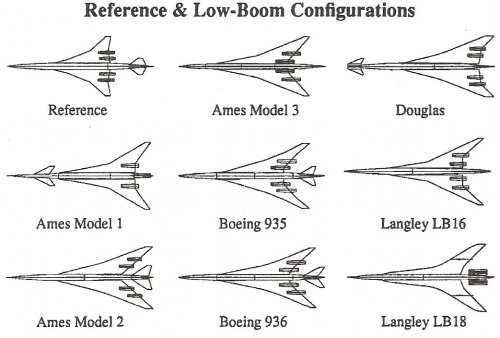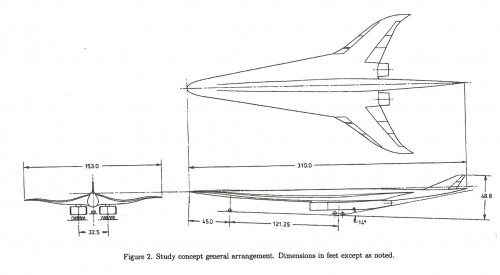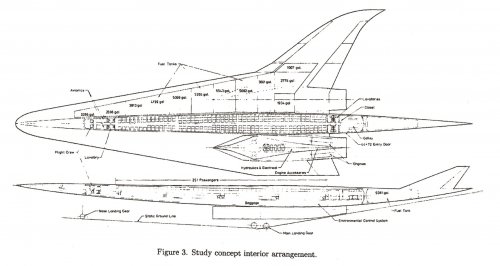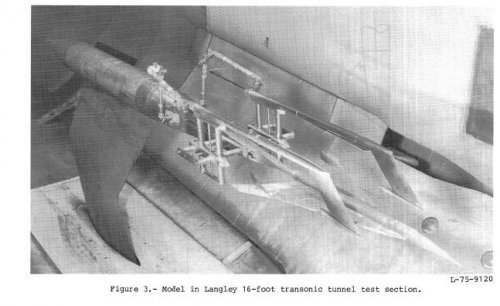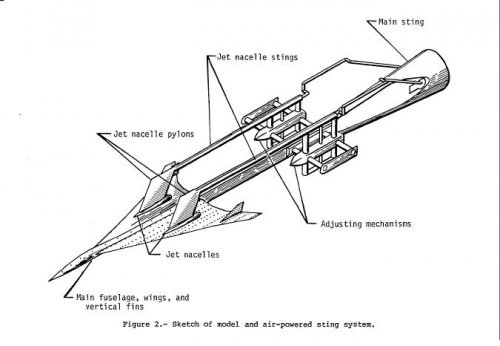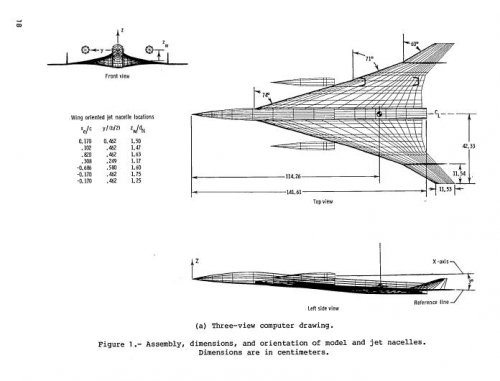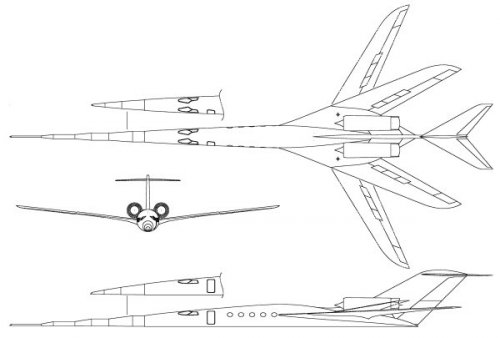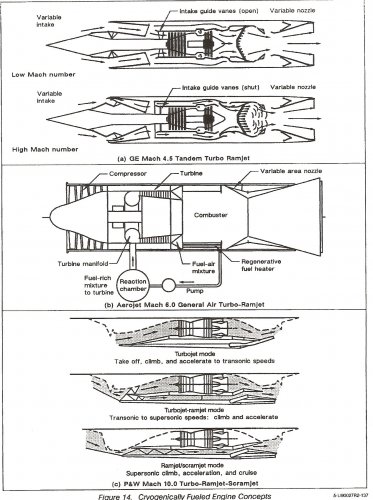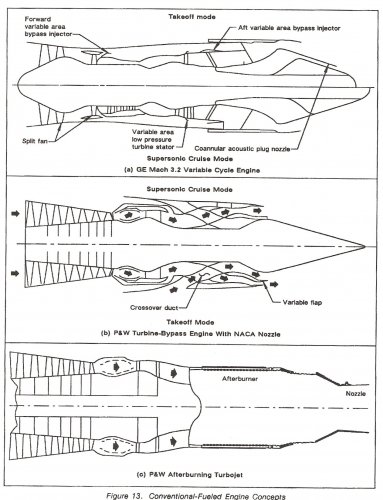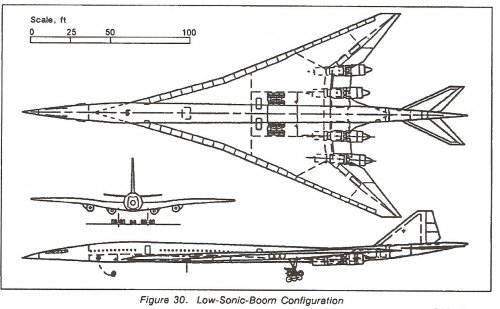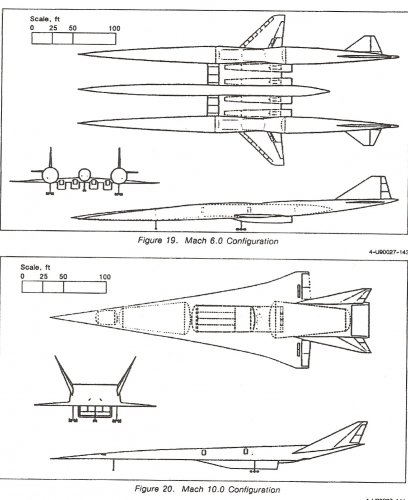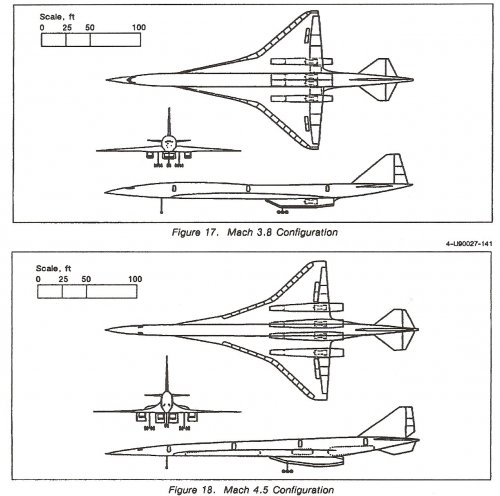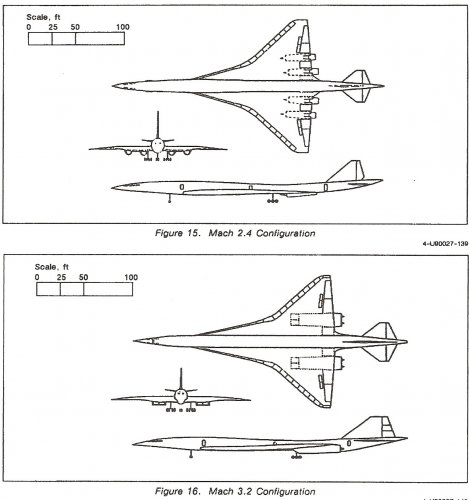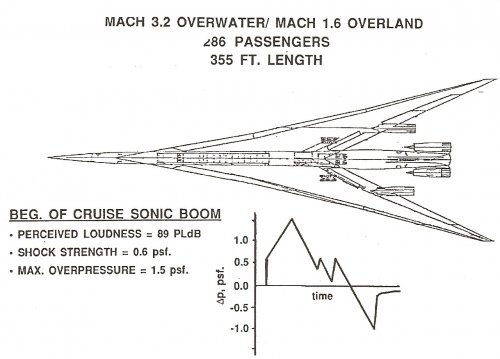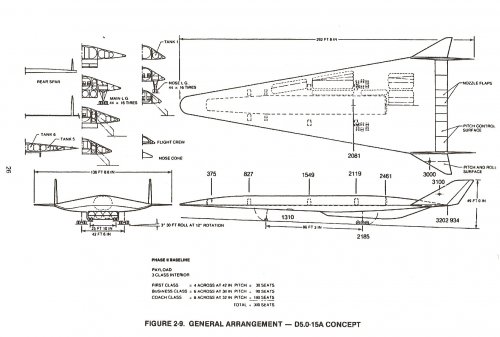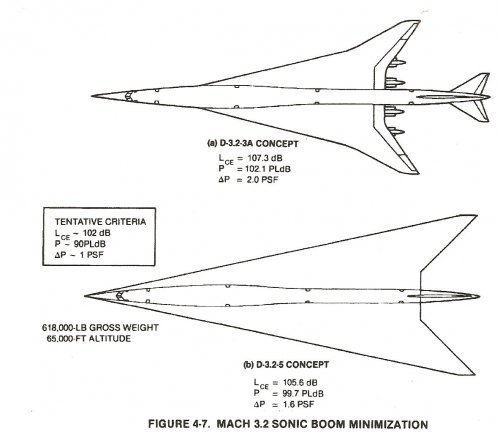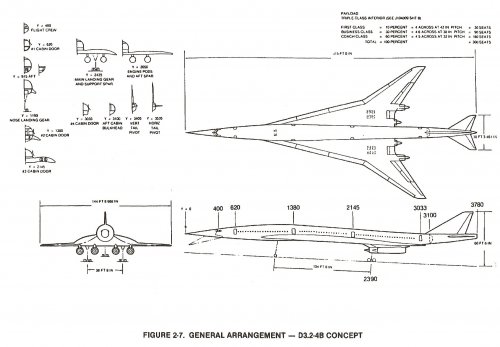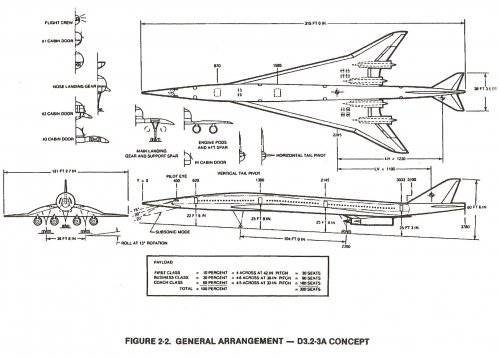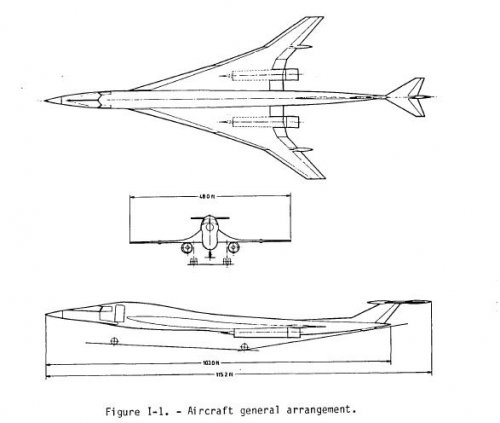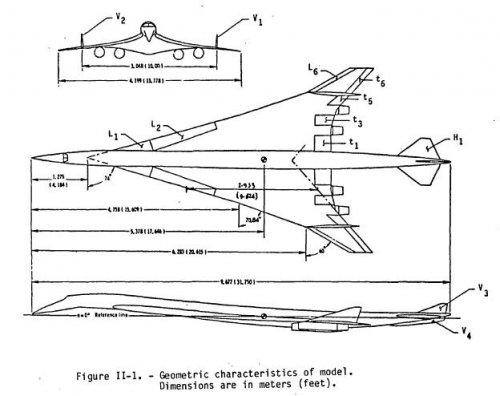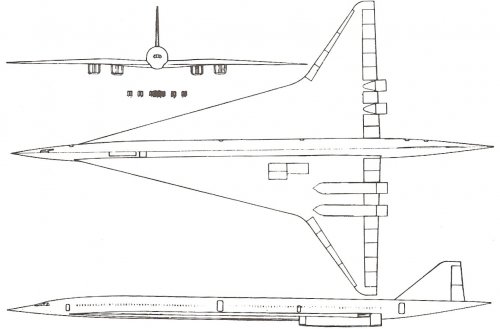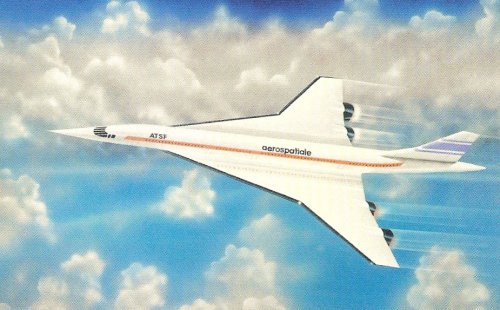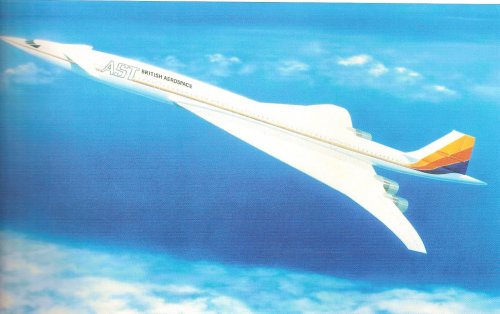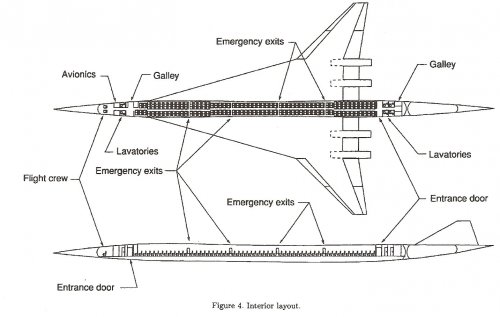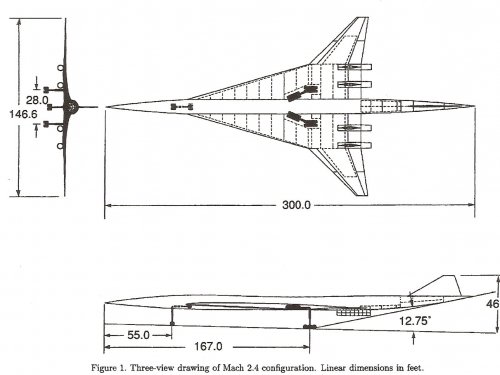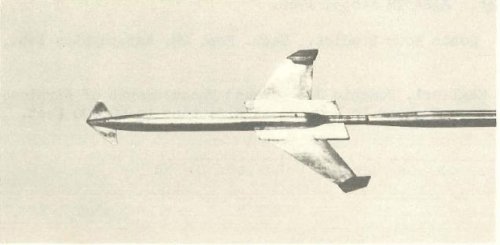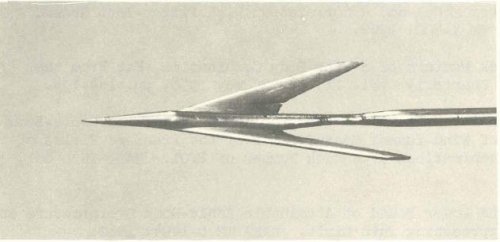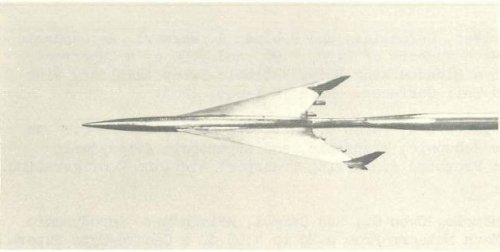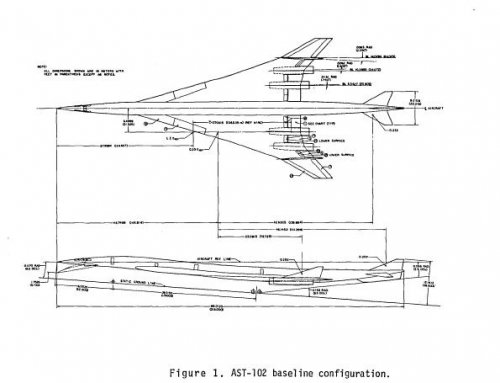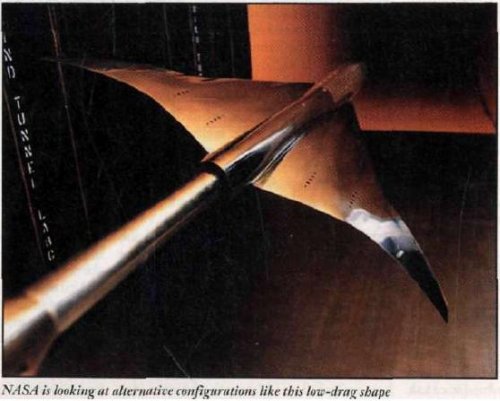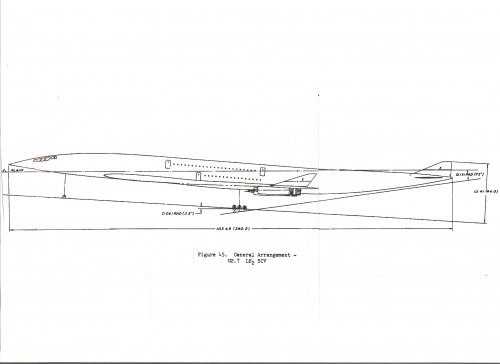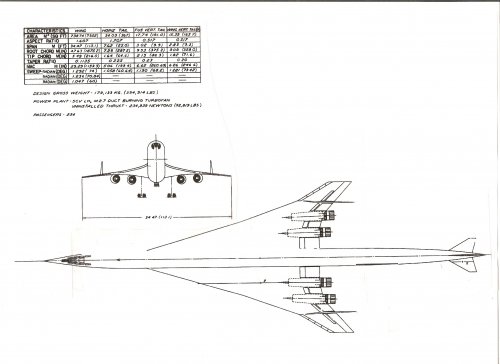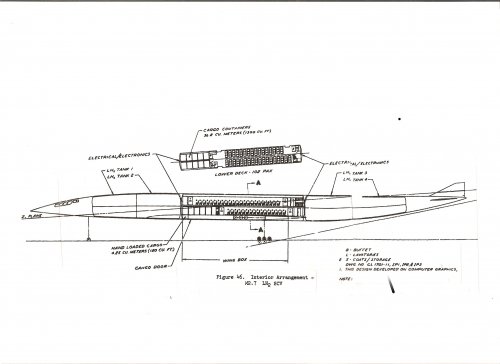You are using an out of date browser. It may not display this or other websites correctly.
You should upgrade or use an alternative browser.
You should upgrade or use an alternative browser.
US Supersonic Transport(SST) Program post-1971
- Thread starter Sundog
- Start date
blackkite
Don't laugh, don't cry, don't even curse, but.....
- Joined
- 31 May 2007
- Messages
- 8,597
- Reaction score
- 6,849
Skybolt, KL_Lesnick, Flateric and Jozef. I scanned some post-1971 US SST drawings from Japanese AVIATION JOURNAL magazine in 1984 to 1985. Among these drawings, T-tail VG design which SKybolt told us is included. It had full time stability augmentation system(SAS) and applied CCV technology.
Attachments
-
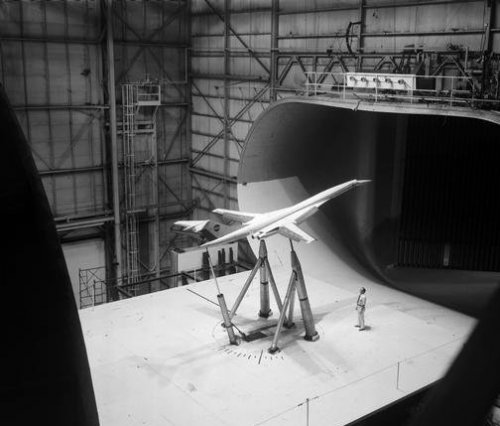 LANGLEY SST MODEL.jpg32.3 KB · Views: 1,216
LANGLEY SST MODEL.jpg32.3 KB · Views: 1,216 -
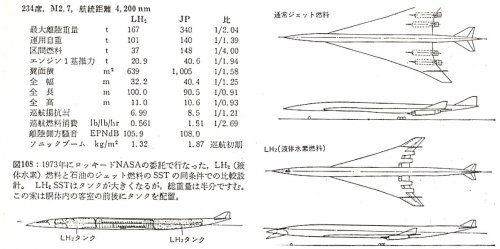 LOCKHEED LH2 SST 1973.jpg116.5 KB · Views: 438
LOCKHEED LH2 SST 1973.jpg116.5 KB · Views: 438 -
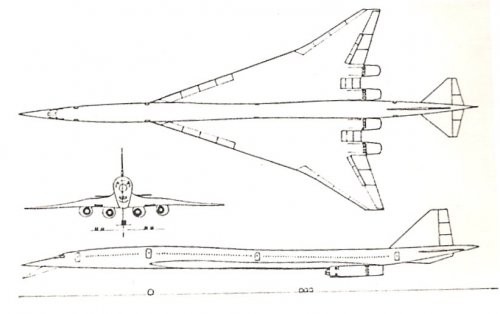 DOUGLAS AST 1976.jpg38.8 KB · Views: 405
DOUGLAS AST 1976.jpg38.8 KB · Views: 405 -
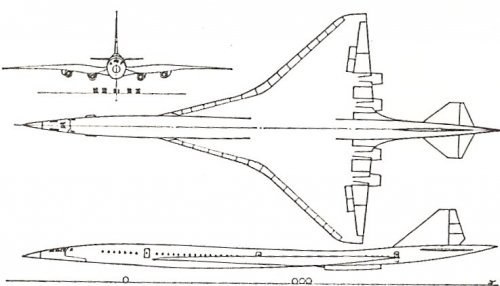 BOEING SST 1976.jpg39 KB · Views: 504
BOEING SST 1976.jpg39 KB · Views: 504 -
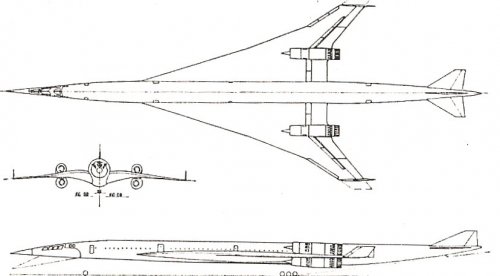 LOCKHEED SCV 1976.jpg41.9 KB · Views: 493
LOCKHEED SCV 1976.jpg41.9 KB · Views: 493 -
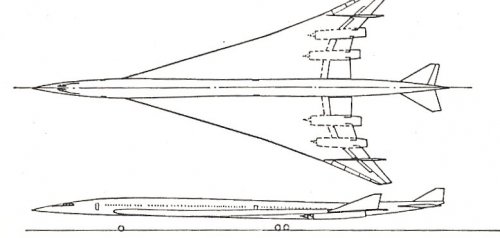 LANGLEY SST ARROW 1973.jpg33 KB · Views: 496
LANGLEY SST ARROW 1973.jpg33 KB · Views: 496 -
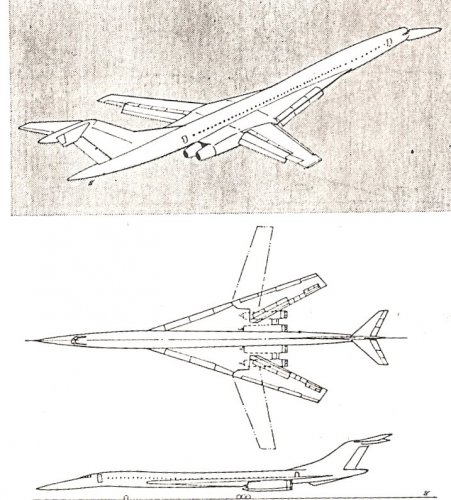 LANGLEY SST 1973.jpg129.1 KB · Views: 1,159
LANGLEY SST 1973.jpg129.1 KB · Views: 1,159
KJ_Lesnick
ACCESS: Top Secret
- Joined
- 13 February 2008
- Messages
- 1,042
- Reaction score
- 104
Thank you very much. I really appreciate the diagrams.
KJ
KJ
- Joined
- 13 May 2006
- Messages
- 1,039
- Reaction score
- 901
How to do these all really beatiful birds?
- Joined
- 14 June 2006
- Messages
- 2,297
- Reaction score
- 487
Well, actually no. The T-tail I mentioned was an early-1968 Boeing design. Langley re-used the idea (BTW, their favorite one by then was SCAT 15F- based) to explore the tail-impingement problem. Anyway, thanks for the scans. The Boeing delta one was the blended-fuselage version of the 2707-300 that the company rejected for building and expecially security (emergency evacuation) problems.Among these drawings, T-tail VG design which SKybolt told us is included.
blackkite
Don't laugh, don't cry, don't even curse, but.....
- Joined
- 31 May 2007
- Messages
- 8,597
- Reaction score
- 6,849
NASA's study in 1982. According to NASA, compered with same cross sectional area single fuselage, drug decrease in supersonic speed because of pressure interaction of each fuselage and structural weight is smaller. M shape wing type has best lift to drag ratio and followed straight middle wing type.
Attachments
KJ_Lesnick
ACCESS: Top Secret
- Joined
- 13 February 2008
- Messages
- 1,042
- Reaction score
- 104
blackkite said:NASA's study in 1982. According to NASA, compered with same cross sectional area single fuselage, drug decrease in supersonic speed because of pressure interaction of each fuselage and structural weight is smaller. M shape wing type has best lift to drag ratio and followed straight middle wing type.
Do you have any L/D ratio figures available for the Straight-middle-wing and M-wing type?
blackkite
Don't laugh, don't cry, don't even curse, but.....
- Joined
- 31 May 2007
- Messages
- 8,597
- Reaction score
- 6,849
blackkite
Don't laugh, don't cry, don't even curse, but.....
- Joined
- 31 May 2007
- Messages
- 8,597
- Reaction score
- 6,849
Hi all! These drawings are NASA's study in 1971 to increase low speed performance using large trailing edge flaps and jet exhaust gas by engines position review. But the interaction between jet exhaust gas and the fuselage, and noise vibration fatigue are problem.(From Japanese AVIATION JOURNAL MAGAZINED in 1984.)
Attachments
- Joined
- 14 June 2006
- Messages
- 2,297
- Reaction score
- 487
A good introduction to Supersonic Cruise Technology in NASA up to the end of the '70s. Useful to read before delving in the thousands of pages that has been declassified. Enjoy.
http://hdl.handle.net/2060/19850020600
http://hdl.handle.net/2060/19850020600
blackkite
Don't laugh, don't cry, don't even curse, but.....
- Joined
- 31 May 2007
- Messages
- 8,597
- Reaction score
- 6,849
Many thanks Skybolt! I knew this report about 25 years ago, and had very strong interest. Few years ago I wanted to get this report and asked GPO how to get this. But their answer was they did not treat this report. I disappointed very much that day.Today we can study this report. It is as a dream.
- Joined
- 14 June 2006
- Messages
- 2,297
- Reaction score
- 487
And now, for going graphical. These are some of the concepts developed by NASA (Langley) and contractors (Boeing, MDD, Lockheed, Kentron) in the frame of the SCAR/SRC research program, expecially in late '70s-early80's.
Of great interest is the business jet concepts, that was meant as a double-use configuration, i.e. supersonic cruise long range interceptor armed with guided missile. Both NASA/Kentron and Boeing worked on the concept (you'll recognize a well known pre-ATF Boeing concept...) . The Boeing blended depicted here was a further evolved configuration, ended in 1977. It had a 733 series designation, a 750.000 lbs MTOW and was meant for transpacific routes. I have a report on that. Will post detailed drawing and inboard details (new landing gear, too).
Of great interest is the business jet concepts, that was meant as a double-use configuration, i.e. supersonic cruise long range interceptor armed with guided missile. Both NASA/Kentron and Boeing worked on the concept (you'll recognize a well known pre-ATF Boeing concept...) . The Boeing blended depicted here was a further evolved configuration, ended in 1977. It had a 733 series designation, a 750.000 lbs MTOW and was meant for transpacific routes. I have a report on that. Will post detailed drawing and inboard details (new landing gear, too).
Attachments
-
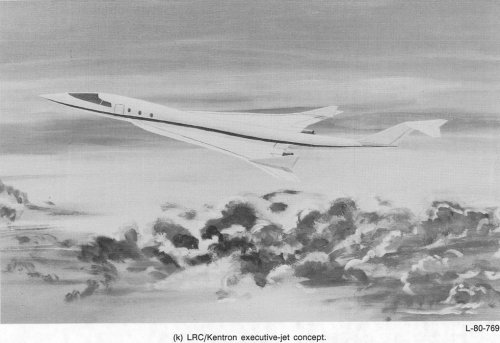 Langley supersonic biz convertibel.jpg468.2 KB · Views: 312
Langley supersonic biz convertibel.jpg468.2 KB · Views: 312 -
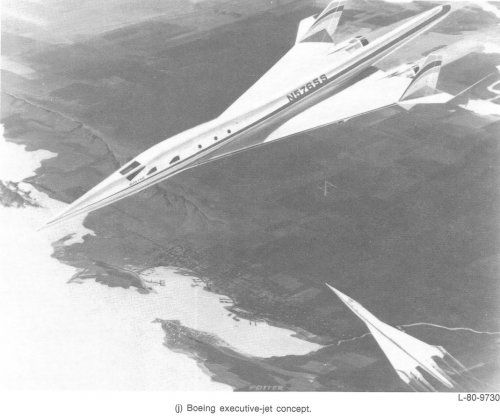 Boeing supersonic bizjet.jpg579.9 KB · Views: 338
Boeing supersonic bizjet.jpg579.9 KB · Views: 338 -
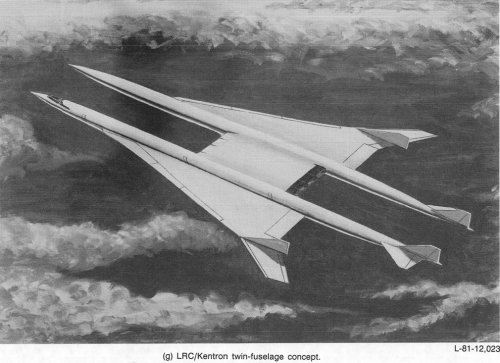 Double fuselage final.jpg523.2 KB · Views: 305
Double fuselage final.jpg523.2 KB · Views: 305 -
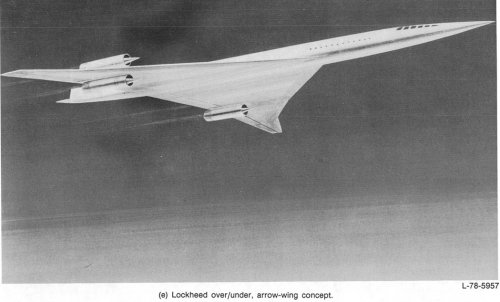 Lockheed arrow.jpg414.5 KB · Views: 300
Lockheed arrow.jpg414.5 KB · Views: 300 -
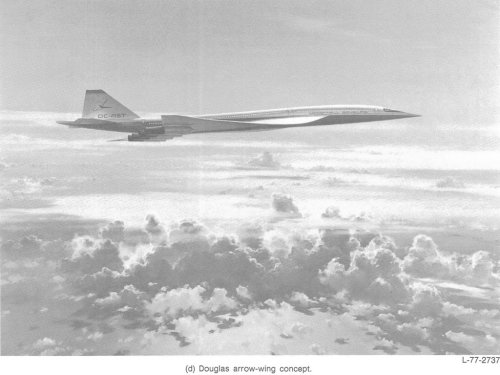 Douglas arrow.jpg458 KB · Views: 338
Douglas arrow.jpg458 KB · Views: 338 -
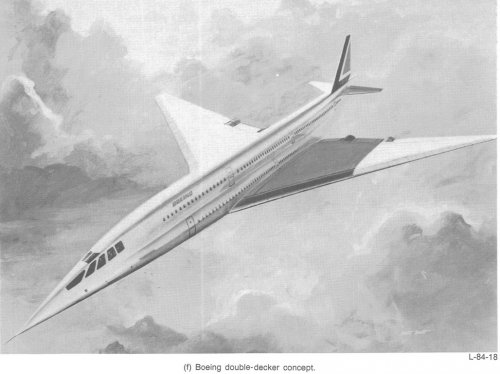 Boeing double deck.jpg459.1 KB · Views: 358
Boeing double deck.jpg459.1 KB · Views: 358 -
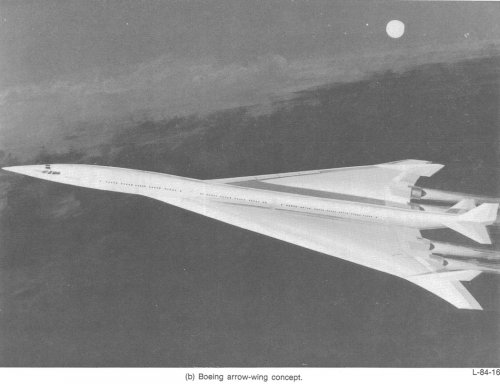 Boeing Arrow Wing.jpg515.1 KB · Views: 313
Boeing Arrow Wing.jpg515.1 KB · Views: 313 -
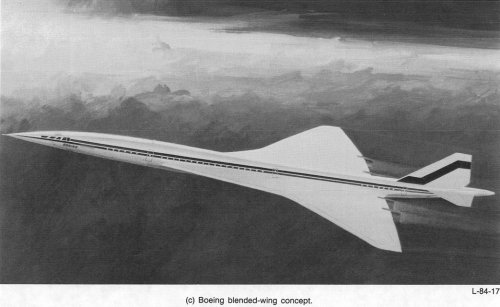 Boeing Blended.jpg431.5 KB · Views: 294
Boeing Blended.jpg431.5 KB · Views: 294
blackkite
Don't laugh, don't cry, don't even curse, but.....
- Joined
- 31 May 2007
- Messages
- 8,597
- Reaction score
- 6,849
SKybolt, many thanks again. These drawings are all seeing for the first time to me. Especially double decker is very impressive, seat miles per flight time may be very large. I also have Kentron SBJ's three view drawings which is little different from your post.
Attachments
KJ_Lesnick
ACCESS: Top Secret
- Joined
- 13 February 2008
- Messages
- 1,042
- Reaction score
- 104
The Kentron/Langley SSBJ design looks like too much plane, too little cabin.
The cabin length is way too little for all that fuselage length
The cabin length is way too little for all that fuselage length
- Joined
- 14 June 2006
- Messages
- 2,297
- Reaction score
- 487
Actually it was an arrow wing SST reduced scale demonstrator disguised as an airplane with a practical "raison d'etre" to justify it from a political point of view. Remember that NASA had to change the name of the Supersonic Cruise Aircraft Research (SCAR) program dropping the "aircraft" to pass Congress opposition, since some powerful Congressmen suspected they were doing a new SST program disguised as a research program. For more in-depth info on this aircraft, you can refer to:
http://hdl.handle.net/2060/19860017806 and references therein (almost all still not available online, though).
http://hdl.handle.net/2060/19860017806 and references therein (almost all still not available online, though).
blackkite
Don't laugh, don't cry, don't even curse, but.....
- Joined
- 31 May 2007
- Messages
- 8,597
- Reaction score
- 6,849
KJ_Lesnick
ACCESS: Top Secret
- Joined
- 13 February 2008
- Messages
- 1,042
- Reaction score
- 104
I liked the Boeing Arrow wing concept. That was truly beautiful and elegant.
KJ
KJ
blackkite
Don't laugh, don't cry, don't even curse, but.....
- Joined
- 31 May 2007
- Messages
- 8,597
- Reaction score
- 6,849
I found this Lockheed Mach4 SST design report from the NTRS. This report said that this design assumed no community noise or sonic boom constraints. But I think this design has good shape for low sonic boom. Specifications are as follows. Enjoy!
1.cruising speed : Mach4 at 75,000ft
2.range : 6,500n.m
3.passengers : 250
4.max taxi weight : 988,088 lb
5.L/D : 7.3@Mach4 , 13.7@subsonic
6.engine : advanced afterburning turbojet 111,000 lb each @sea level
Source:NASA Technical Memorandum 4223 Concept Development of a Mach4 High-Speed Civil Transport
1.cruising speed : Mach4 at 75,000ft
2.range : 6,500n.m
3.passengers : 250
4.max taxi weight : 988,088 lb
5.L/D : 7.3@Mach4 , 13.7@subsonic
6.engine : advanced afterburning turbojet 111,000 lb each @sea level
Source:NASA Technical Memorandum 4223 Concept Development of a Mach4 High-Speed Civil Transport
Attachments
- Joined
- 2 August 2006
- Messages
- 3,206
- Reaction score
- 1,322
Actually, the Lockheed Martin design shown above looks like a derivative of a 1980's NASA design study, but I forgot the name of the woman who designed it at NASA; her's had six engines. Our senior aircraft design studies were based on the NASA High Speed Civil Transport (HSCT) study requirements and she was the representative from NASA that we had to give our presentations to for review.
- Joined
- 26 May 2006
- Messages
- 33,575
- Reaction score
- 13,703
blackkite
Don't laugh, don't cry, don't even curse, but.....
- Joined
- 31 May 2007
- Messages
- 8,597
- Reaction score
- 6,849
blackkite
Don't laugh, don't cry, don't even curse, but.....
- Joined
- 31 May 2007
- Messages
- 8,597
- Reaction score
- 6,849
Hi! Boeing's High Speed Civil Transport study in 1989.
Passengers : 250-300
Range : 5,000-6,500n.m.
Source : NASA Contract Report High Speed Civil Transport Study, Boeing Commercial Airplanes New Airplane Development
Passengers : 250-300
Range : 5,000-6,500n.m.
Source : NASA Contract Report High Speed Civil Transport Study, Boeing Commercial Airplanes New Airplane Development
Attachments
blackkite
Don't laugh, don't cry, don't even curse, but.....
- Joined
- 31 May 2007
- Messages
- 8,597
- Reaction score
- 6,849
Hi! Douglas HSCT study.
Passenger : 300
Cruising speed : mach 3.2 to mach 5
Range : 3,900n.m(mach5) to 6,500n.m(mach3.2)
Enjoy.
Source : (1)NASA Contractor Report 4235 Study of High-Speed Civil Transport. Douglas Aircraft
Company December 1989
(2)DOUGLAS AIRCRAFT HSCT STATUS & FUTURE RESEARCH NEED May 1991
http://ntrs.nasa.gov/archive/nasa/casi.ntrs.nasa.gov/19900004054_1990004054.pdf
Passenger : 300
Cruising speed : mach 3.2 to mach 5
Range : 3,900n.m(mach5) to 6,500n.m(mach3.2)
Enjoy.
Source : (1)NASA Contractor Report 4235 Study of High-Speed Civil Transport. Douglas Aircraft
Company December 1989
(2)DOUGLAS AIRCRAFT HSCT STATUS & FUTURE RESEARCH NEED May 1991
http://ntrs.nasa.gov/archive/nasa/casi.ntrs.nasa.gov/19900004054_1990004054.pdf
Attachments
- Joined
- 26 May 2006
- Messages
- 33,575
- Reaction score
- 13,703
Hi,
http://ntrs.nasa.gov/archive/nasa/casi.ntrs.nasa.gov/19840019606_1984019606.pdf
http://ntrs.nasa.gov/archive/nasa/casi.ntrs.nasa.gov/19840019606_1984019606.pdf
Attachments
-
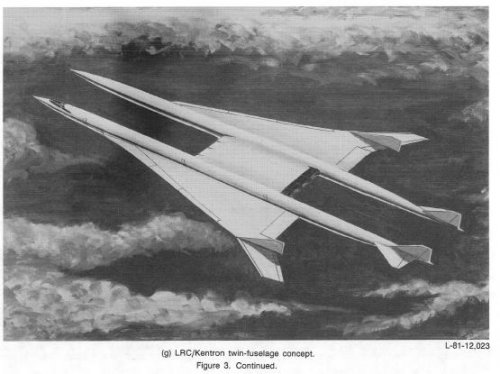 untitled.JPG36.6 KB · Views: 178
untitled.JPG36.6 KB · Views: 178 -
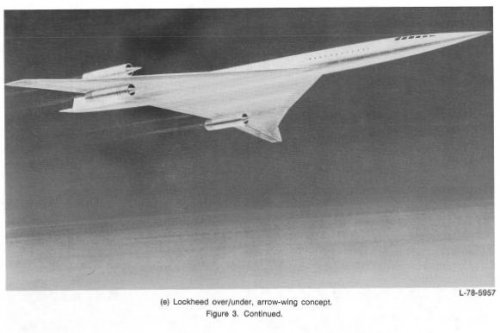 Lockheed.JPG23.1 KB · Views: 155
Lockheed.JPG23.1 KB · Views: 155 -
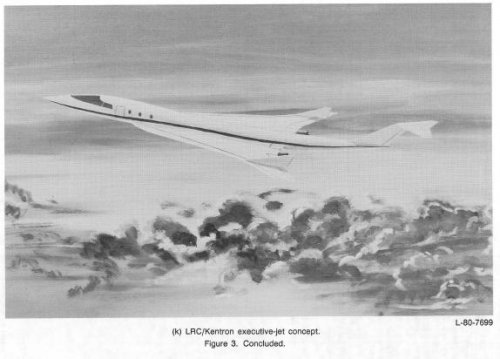 Executive jet.JPG31.1 KB · Views: 168
Executive jet.JPG31.1 KB · Views: 168 -
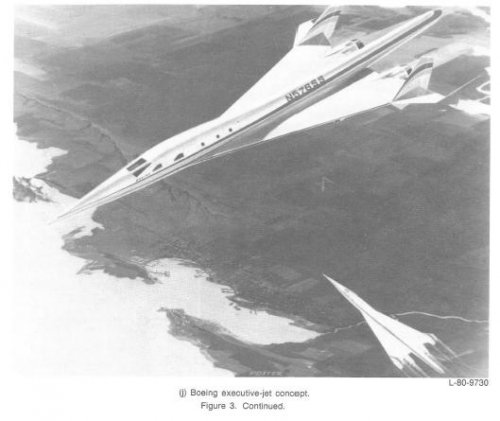 Bo executive jet.JPG27.2 KB · Views: 175
Bo executive jet.JPG27.2 KB · Views: 175 -
 Douglas arrow wing.JPG28.3 KB · Views: 172
Douglas arrow wing.JPG28.3 KB · Views: 172 -
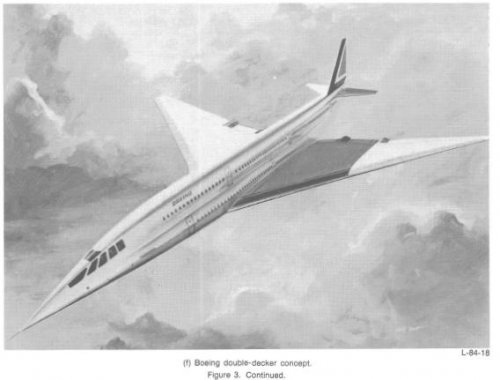 Bo double deck.JPG25.2 KB · Views: 168
Bo double deck.JPG25.2 KB · Views: 168 -
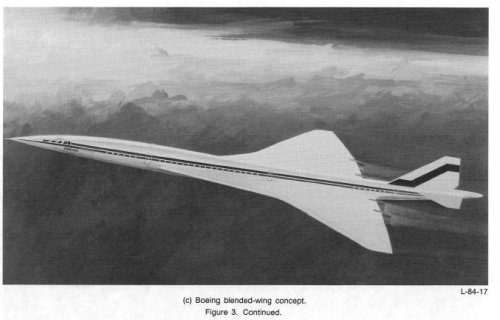 Bo blended wing.JPG37.1 KB · Views: 156
Bo blended wing.JPG37.1 KB · Views: 156 -
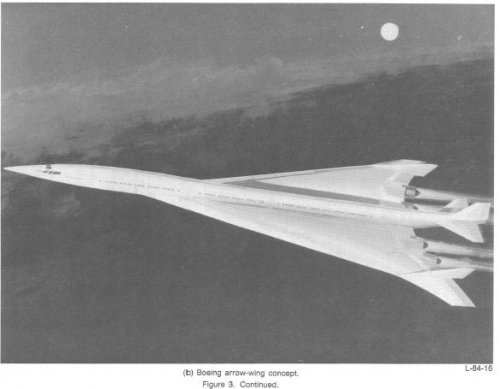 Bo arrow wing.JPG28.3 KB · Views: 170
Bo arrow wing.JPG28.3 KB · Views: 170
blackkite
Don't laugh, don't cry, don't even curse, but.....
- Joined
- 31 May 2007
- Messages
- 8,597
- Reaction score
- 6,849
Hi! Lockheed/Langley Mach 2.4 HSCT study.It has trapezoidal panel wing and tailless configuration for low weight and high aerodynamic efficiency at cruise similar to British Aerospace AST, Aerospatiale ATSF and Tu-244.
1.Cruising speed : Mach2.4
2.Range : 6,500n.m
3.TOGW : 614,300lb
4.Engine : 4 advanced turbine bypass engine 39,000lb each
5.L/D : 9 @Mach 2.4
6.Passengers : 251
Enjoy.
http://ntrs.nasa.gov/archive/nasa/casi.ntrs.nasa.gov/20000013558_2000010539.pdf
1.Cruising speed : Mach2.4
2.Range : 6,500n.m
3.TOGW : 614,300lb
4.Engine : 4 advanced turbine bypass engine 39,000lb each
5.L/D : 9 @Mach 2.4
6.Passengers : 251
Enjoy.
http://ntrs.nasa.gov/archive/nasa/casi.ntrs.nasa.gov/20000013558_2000010539.pdf
Attachments
- Joined
- 26 May 2006
- Messages
- 33,575
- Reaction score
- 13,703
Hi,
Vought AST-102 and AST-200,and some designs from 1963.
http://ntrs.nasa.gov/archive/nasa/casi.ntrs.nasa.gov/19790013875_1979013875.pdf
http://ntrs.nasa.gov/archive/nasa/casi.ntrs.nasa.gov/19700077971_1970077971.pdf
Vought AST-102 and AST-200,and some designs from 1963.
http://ntrs.nasa.gov/archive/nasa/casi.ntrs.nasa.gov/19790013875_1979013875.pdf
http://ntrs.nasa.gov/archive/nasa/casi.ntrs.nasa.gov/19700077971_1970077971.pdf
Attachments
- Joined
- 1 April 2006
- Messages
- 11,053
- Reaction score
- 8,512
It's not 'Vought', it's their contract work on NASA-Langley Research Center AST
(Advanced Supersonic Technology) concepts, based on wind tunnel data obtained during the late 1960's for the NASA SCAT15F (evolved in AST-102) configuration. This is regarding first paper. Second is Langley in-house paper itself.
(Advanced Supersonic Technology) concepts, based on wind tunnel data obtained during the late 1960's for the NASA SCAT15F (evolved in AST-102) configuration. This is regarding first paper. Second is Langley in-house paper itself.
blackkite
Don't laugh, don't cry, don't even curse, but.....
- Joined
- 31 May 2007
- Messages
- 8,597
- Reaction score
- 6,849
Similar threads
-
US Supersonic Transport (SST) Program 1960-1971
- Started by Orionblamblam
- Replies: 2K
-
-
1990 high speed civil transportation studies
- Started by ford_tempo
- Replies: 1
-
CalPoly « Horizon » Blended Wing Aircraft (NASA/USRA advanced design program)
- Started by Stargazer
- Replies: 3
-




